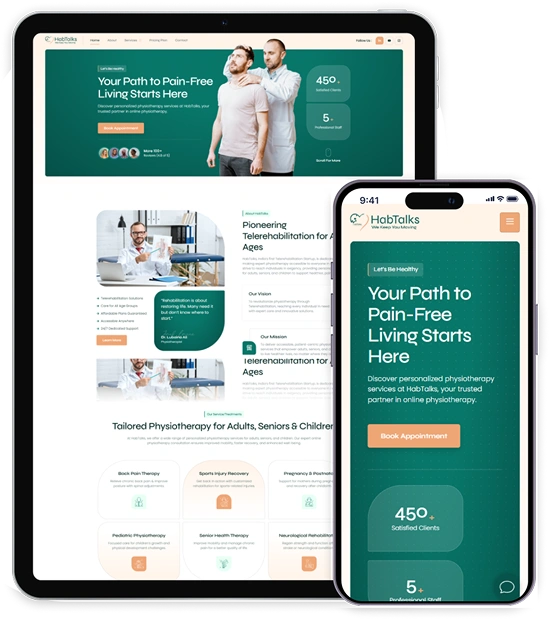Companies without websites lose 76% of potential customers. This fact makes an online presence crucial for today’s businesses.
Web development cost in India show remarkable variation. A simple website starts at ₹10,000, while complex enterprise solutions can exceed ₹5,00,000. My years as a web developer have taught me how these costs work. Generally, small business websites (10-15 pages) range between ₹25,000 and ₹75,000, and sophisticated platforms can reach ₹1,00,000 or more. And, monthly maintenance costs for these 15-20 page websites run between ₹2,500 and ₹5,000.
India’s massive online market of 900 million internet users ranks second globally, which highlights the value of this investment. Research shows 65% of Indian consumers look up businesses online before buying. This piece will guide you through the factors that affect website development pricing in India and reveal the hidden costs many developers don’t mention.
Understanding Website Development Cost in India
Web development prices in India vary widely based on several key factors. Businesses planning their web development budgets should expect to spend between ₹10,000 and ₹2,50,000. The final cost depends on their specific needs and project scope.
What influences the cost of website making in India?
Five main factors determine website development costs in India. The type and complexity of your website affect the price substantially. The number of pages determines development time and resource needs. Design customisation makes a big difference – McKinsey reports that 71% of customers want individual-specific experiences. Advanced features such as AI chatbots or booking tools add to the cost. You’ll also need a budget for maintenance and updates.
Price-affecting factors also include:
- SEO optimisation and content creation
- Reliable hosting and premium domain names
- Security features (SSL certificates, firewalls)
- Mobile responsiveness to serve 60% of traffic from mobile devices

Static vs dynamic vs e-commerce websites
Different website types come with varying price tags. Compared to dynamic websites, static websites usually cost between ₹5K and ₹20K. In general, static websites display fixed content that seldom changes during normal use.
Websites with dynamic elements range in price from ₹20,000 to ₹50,000. They include interactive elements and recurrent updates that work well for blogs and businesses providing services.
As far as investments go, e-commerce websites usually require the biggest, usually between 50,000 and 200,000 rupees because these platforms need to have product catalogues, shopping carts, payment systems, and tools for inventory management.
Freelancer, agency, or DIY: who you hire matters
Your choice of developer shapes both cost and quality. Freelancers ask between ₹10,000 and ₹25,000 for website development. They give personal attention and better rates, but might struggle with complex projects.
A web design agency can offer everything from design to development and a lot more; it varies in price, but it offers organised processes, a wide range of expertise, and ongoing support.
DIY website builders like Wix or Squarespace are the cheapest but have limits in customisation, SEO performance, and professional look.
Each option has its benefits based on your budget, timeline, and technical needs. Your business goals and long-term digital plans should guide your final choice.
Breakdown of Key Website Cost Components
The real investment needed for an online presence in India becomes clear when you break down website development costs. A better budget plan starts with knowing what each component costs.
Domain and hosting charges
Domain names in India cost between ₹500 and ₹2,000 yearly. The price changes based on extensions like .com, .in, or specialised domains. Your hosting needs will require regular investment:
- Shared hosting: ₹1,000-₹15,000 annually (suitable for small websites)
- VPS hosting: ₹30,000-₹75,000 annually (for growing businesses)
- Dedicated hosting: ₹1,00,000-₹3,00,000 annually (for high-traffic sites)
Design and user experience costs
Your design quality directly affects visitor involvement and conversions. You can get template-based designs for ₹5,000-₹30,000, which are affordable options. Custom UI/UX designs range from ₹25,000-₹1,00,000 for unique brand experiences.
Indian designers charge much less than their Western counterparts. UI/UX specialists in India earn about ₹7.2 lakhs yearly, with hourly rates of ₹400-₹800—about 80% less than US designers.
Development and CMS integration
Your platform choice determines development costs. Simple CMS implementation costs between ₹5,000-₹50,000. Custom development costs more but gives you unique features that match your business needs.
Content writing and SEO services
Good content boosts engagement and search visibility. Professional content writing rates in India are:
- Web pages (400-500 words): ₹600 per page
- Blog posts (400-500 words): ₹550 per post
- Research-based writing: 70% premium over base rates
SEO service investments typically run:
- Monthly retainers: ₹8,500-₹75,000
- Project-based: ₹25,000-₹5,00,000
- Hourly rates: ₹500-₹2,500
Security, SSL, and maintenance fees
Smart security investments protect your digital assets. SSL certificates range from free (with hosting) to ₹39,800 yearly for advanced protection. Professional SSL installation costs about ₹7,557 per certificate.
Your website needs regular maintenance for security and performance. Monthly packages cost:
- Personal sites: ₹500-₹2,000
- Business websites: ₹1,000-₹15,000
- E-commerce platforms: ₹5,000-₹50,000
These maintenance packages cover security updates, backups, and minor content changes—key elements for your website’s health.
Cost by Website Type and Business Size
Website prices in India change a lot depending on your business type and size. Understanding these costs will help you plan your digital budget better.
Small business website cost in India
A professionally designed website for small businesses ranges from ₹15,000 to ₹75,000. This investment covers websites with 5-25 pages and includes features like dynamic design, SEO setup, and business email addresses. Your monthly maintenance budget should be around ₹40,000. A simple working website is better than a free one that doesn’t work well. Professional development might cost you between ₹30,000 and ₹45,000, which is worth it if you can afford it.
E-commerce website development cost
E-commerce websites cost more because they’re complex. A basic online store starts at ₹50,000, and advanced platforms are a big deal as they can cost over ₹20,00,000. Your business scale determines the price:
- Small stores (up to 100 products): ₹60,000 to ₹1,00,000
- Medium platforms (up to 1000 products): ₹1,00,000 to ₹10,00,000
- Large marketplaces: ₹10,00,000+
Enterprise-level website pricing
Enterprise websites need sophisticated features and reliable infrastructure. Prices start from ₹3.5 lakhs and can go up to several lakhs. This money goes into custom applications, user dashboards, advanced search features, and complex data management systems. Large companies spend between ₹1,00,000 and ₹3,00,000 on professionally designed websites.
Freelancer portfolio or personal site cost
Freelancers should use DIY hosting platforms instead of expensive custom solutions. This smart choice saves money while building professional credibility. Most freelancers invest ₹5,000 to ₹50,000 in their portfolio websites. GoDaddy’s hosting starts at just ₹79/month and includes free domain names and SSL certificates.
Hidden Costs and Smart Budgeting Tips
A startling revelation shows that 78% of Indian businesses end up paying 40-60% more than their original website budget. My clients often get blindsided by unexpected costs they never anticipated.
Common hidden charges to watch out for
Vendors often leave out the 18% GST on digital services from their original quotes. As with payment gateway integration, costs can eat up 2-3.5% of each transaction. Other major hidden expenses include:
- Legal compliance requirements (₹50,000-₹4,00,000)
- Security implementation (₹75,000-₹3,00,000 annually)
- Content creation (₹5-₹25 per word)
How to avoid overspending on features
The Minimum Viable Product (MVP) approach helps cut down original costs and reduces hosting and maintenance expenses. Your project needs clear requirements from the start to avoid pricey revisions later. Business goals should drive your feature selection instead of decorative elements.
Tips to reduce website development cost in India
Template-based designs (₹7,500-₹25,000) cost less than custom designs (₹75,000-₹5,00,000+). Cross-platform development makes sense if you need both Android and iOS compatibility. WordPress and other open-source solutions help you avoid licensing fees.
When to invest more and when to save
Smart investments focus on elements that affect business results directly. Better returns usually come from intuitive experience, clear messaging, and effective calls to action. You can save money on decorative elements and rarely-used features. Regular maintenance protects your investment, though it adds to ongoing expenses.
Conclusion
Smart web development investment needs careful planning and a clear picture of the actual costs. Over the last several years, I’ve seen businesses achieve soaring wins online when they spend their money wisely. Your website shows who you are in the digital world, and smart investment rather than cutting corners ended up bringing better results for business.
Price options give businesses of all sizes room to work with. New website owners should begin with the basics and build up as they grow online. So this approach helps avoid overspending while still getting professional results.
Note that website development is an investment that keeps going, not a one-time cost. Your digital assets need regular maintenance, security updates, and fresh content to stay competitive without a doubt.
The Indian web development market delivers top-tier solutions at much lower costs than global options. Businesses can create sophisticated online experiences without spending too much. Your website should serve customers well and support your business goals. A well-built website will boost your credibility, improve how customers participate, and help your business grow stronger for years ahead.



